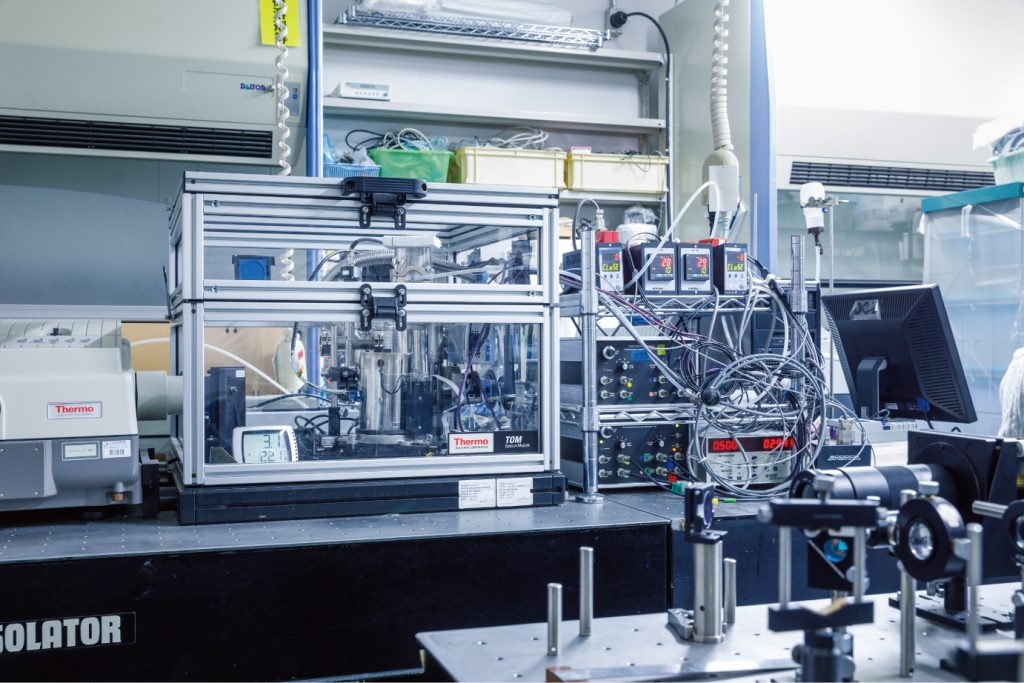Water is indispensable to our lives. But, despite its familiarity as something which makes daily life possible, there is so much about water that we still do not understand.
At first glance, water appears to be a single, continuous, flowing substance; however, it is really a collection of water molecules that are themselves comprised of two hydrogen atoms and one oxygen atom. Even understanding that, though, we still do not fully understand the structure and behavior of water at the nanometer level (one-billionth of a meter).
The reason is because water’s structure and movement varies significantly depending upon the matter or material with which it comes into contact. Given the difficulty of this area of study, the current aim is to obtain research results that will give us a uniform understanding of the diverse changes in shape caused by water’s structure and movement.
At the Tokyo University of Science, the researchers of the Yui Laboratory in the Faculty of Science Division I Department of Chemistry are investigating water’s mysteries. These researchers are joined by numerous other from an array of different faculties and departments, including the Faculty of Science Division I Department of Physics, the Faculty of Engineering Liberal Arts and Department of Mechanical Engineering, and the Faculty of Science and Technology Department of Pure and Applied Chemistry and Department of Mechanical Engineering; together, these researchers are tackling the difficult challenge of understanding the scientific principles of water’s structure and movement atop different matter and material surfaces.

Professor Yui explains that, by having a complete understanding of the structure and movement of water atop different material surfaces, it can be controlled to achieve a variety of different effects.
For example, it can be used enable the construction of rapid testing equipment that can be used with small amounts of water or blood. Currently, in space, it takes two days to perform drinking water quality testing, but this research could greatly shorten that time. It could also likely be applied to the development of artificial joints with superior durability or regenerative medical materials adapted for living organisms.
Or, by understanding the movement of water atop different material surfaces, materials can be developed which reduce resistance between seawater and the hulls of boats, thereby reducing the amount of fuel that boats require.
Unlocking the secrets of water’s structure and movement atop different material surfaces would contribute significantly not only in medicine and the life sciences but also in environmental and energy-related research.
Currently, the researchers in the Yui Laboratory are developing state-of-the-art optical lasers and other innovative measurement tools and methods that will help them better understand chemical reactions, group structure, movement and other characteristics of water molecules atop different material surfaces. These researchers, in collaboration with those from various other fields, are working daily to uncover water’s secrets and to apply these for the benefit of life science, environmental science, materials science and so much more.
■ Main research content